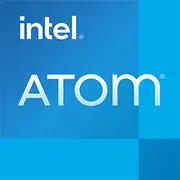Intel Atom Z650

Intel Atom Z650: An Ultra-Budget Processor for Niche Tasks in 2025
April 2025
Introduction: Why Remember a 14-Year-Old Processor?
Released in 2011, the Intel Atom Z650 became a symbol of the netbook era and compact devices. Despite its antiquity, in 2025 it can still be found in specialized gadgets: POS terminals, industrial panels, or budget educational tablets. Let’s explore who and why it might be useful today.
1. Architecture and Technology Process: Minimum Resources — Maximum Energy Efficiency
Cores and Threads:
- One core (Saltwell microarchitecture), one thread.
- Clock Speed: 1.2 GHz (without Turbo Boost).
Graphics:
- Integrated GPU GMA 600 (on Intel SM35 chipset).
- Support for resolutions up to 720p.
Technology Process: 45 nm — by 2025 standards, this is "dinosaur," but in 2011, such chips were considered progressive for ultra-portable devices.
Architecture Features:
- Lack of multithreading (Hyper-Threading).
- L2 Cache: 512 KB.
- Support for DDR2-800 memory (up to 2 GB).
Example Device for 2025: Tablet ToughTab X1 (for warehouse logistics) with Atom Z650 — price $249. The device runs on Linux Lite and is designed to run 1–2 applications.
2. Power Consumption and TDP: Record Savings
- TDP 3 W — one of the lowest figures in the history of x86 processors.
- Voltage: 0.85–1.1 V.
Why is this important today?
In 2025, such chips are used in devices where autonomy and passive cooling are critical:
- IoT sensors powered by solar panels.
- Electronic price tags with E-Ink displays.
3. Performance: What Can the Z650 Do in 2025?
Office Tasks:
- LibreOffice, browser (with 1–2 tabs): CPU load 90–100%, noticeable lags.
- Video calls: Impossible, even at 720p.
Multimedia:
- Video: 720p (H.264) via VLC — 15–20% CPU load. 1080p — lags significantly.
- Music, podcasts: Perfectly functional.
Gaming:
- Classics from the 2000s: Half-Life 1 (20–30 FPS on low settings).
- Modern browser games (e.g., "Slither.io") — 10–15 FPS.
Turbo Mode: Absent. Fixed frequency — 1.2 GHz.
4. Use Cases: Who Will Benefit from It in 2025?
- Educational Gadgets: Children’s tablets like KidPad EZ ($199) with pre-installed educational apps.
- Self-Service Terminals: Checkouts in small stores.
- Backup Devices: Spare laptop for travel (e.g., Nomad Lite — $279).
Categorically Unsuitable For:
- Graphic work, video editing, gaming.
- Multitasking (simultaneous running of a browser and messenger causes freezes).
5. Autonomy: Up to 12 Hours — With Considerations
- Operating Time: 8–12 hours (with a battery capacity of 30–40 Wh).
- Energy-Saving Technologies:
- Intel SpeedStep (dynamic frequency management).
- Disabling unused components (Wi-Fi, backlighting).
Tip: For maximum autonomy, disable all background processes and use a Linux-based OS (Lubuntu, Puppy Linux).
6. Comparison with Competitors: Who Was and Who Has Taken Their Place
2011–2012:
- AMD C-50 (2 cores, 1 GHz, TDP 9 W): Better multitasking, but weak on autonomy.
- ARM Cortex-A9 (Android tablets): Superior energy efficiency, but lacked x86 software support.
2025:
- ARM Chips (Apple M3, Qualcomm Snapdragon X Elite): Over 100 times more powerful, with similar TDP.
- Intel N100 (7 nm): 4 cores, TDP 6 W, 4K support — device prices starting from $299.
Conclusion: The Z650 is relevant only where price, not performance, is critical.
7. Pros and Cons: Why Is It Still Being Produced?
Pros:
- Cost: The chip is cheaper than $5 in bulk orders.
- Compatibility with outdated software (Windows XP, DOS).
- Repairability: Simple replacement on the motherboard.
Cons:
- No future-proofing: Even a browser update can crash the system.
- Limited OS support: No drivers for Windows 11.
8. Recommendations for Device Selection: Only for Specific Needs
Types of Devices:
- Ultra-Budget Tablets: For example, EduTab Mini — for reading books and simple quizzes.
- Specialized Equipment: Barcode scanners, navigators for warehouse carts.
What to Look For:
- RAM: 2 GB is the necessary minimum.
- Storage: Better to have a 64 GB SSD (eMMC wears out quickly).
- Screen: 10 inches, matte finish — reduces glare.
Price: New devices — $199–$299. Don’t pay extra!
9. Final Conclusion: For Whom Is Z650 a Reasonable Choice?
It makes sense to buy a laptop/tablet with Atom Z650 in 2025 if:
- You need a cheap device for one task (e.g., a cash register).
- You require maximum autonomy without a recharging option.
- You collect retro gadgets or work with outdated software.
Key Benefit: Price below $300 and a lifespan of 5+ years without the risk of breakdown due to simple construction.
Alternative: For $350, you can get a laptop with Intel N100 — 10 times more powerful, supporting modern operating systems. But if the budget is tight, the Atom Z650 is still alive!
Conclusion: The Intel Atom Z650 is an example of a "digital long-liver." It may not suit the majority of users, but it remains irreplaceable in niche scenarios. As they say, "old hardware" doesn't die — it simply finds new applications.
Basic
CPU Specifications
Memory Specifications
GPU Specifications
Share in social media
Or Link To Us
<a href="https://cputronic.com/en/cpu/intel-atom-z650" target="_blank">Intel Atom Z650</a>